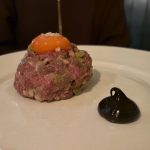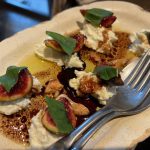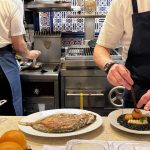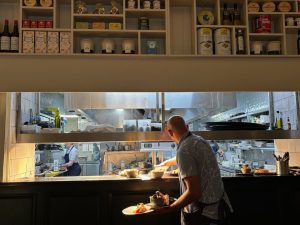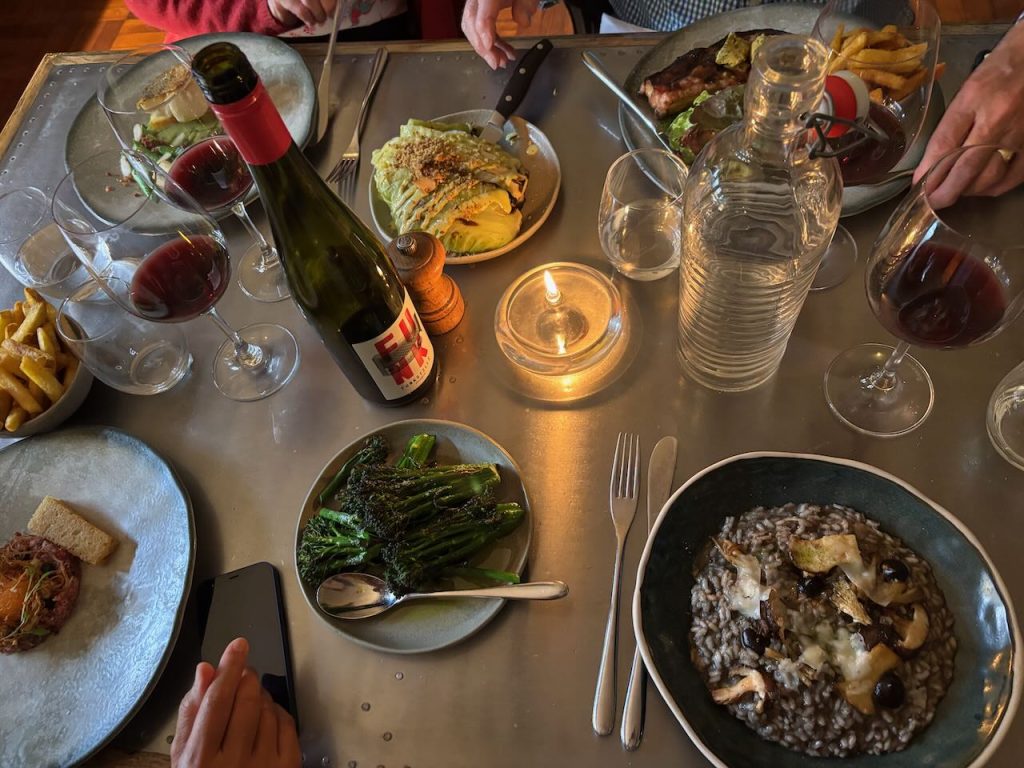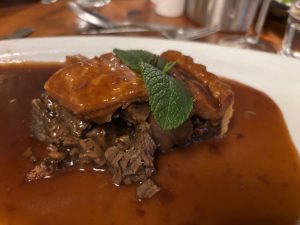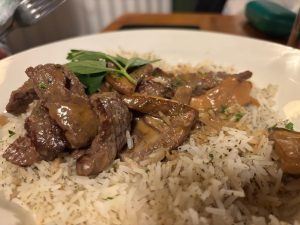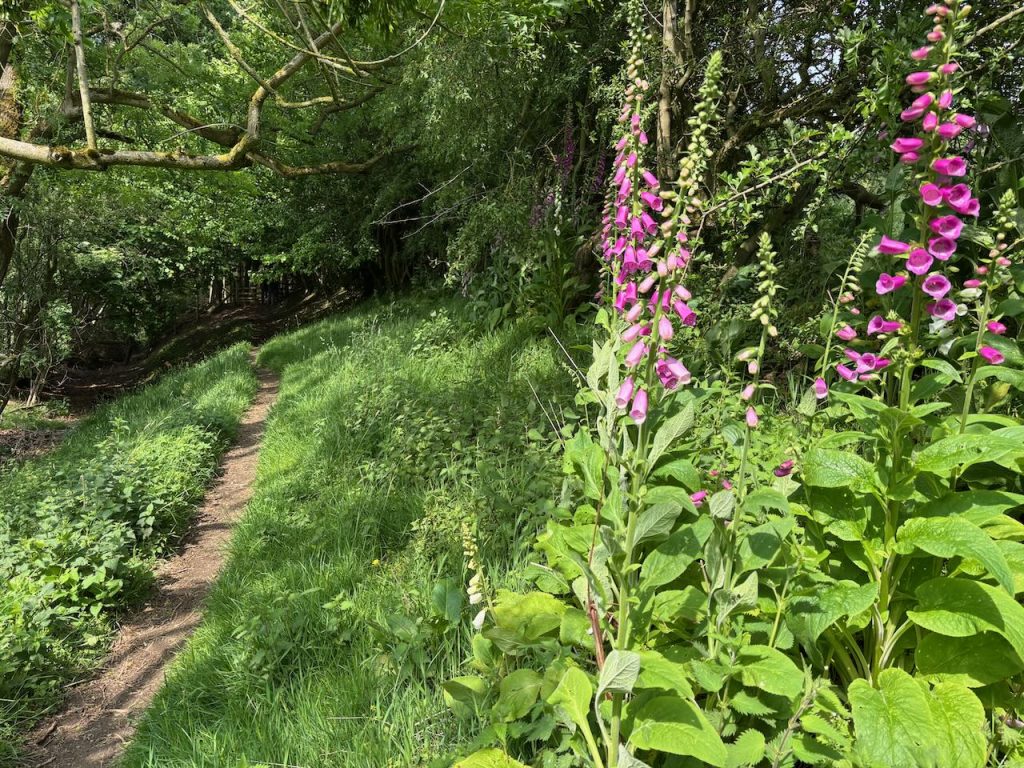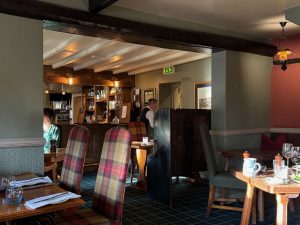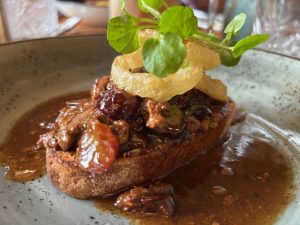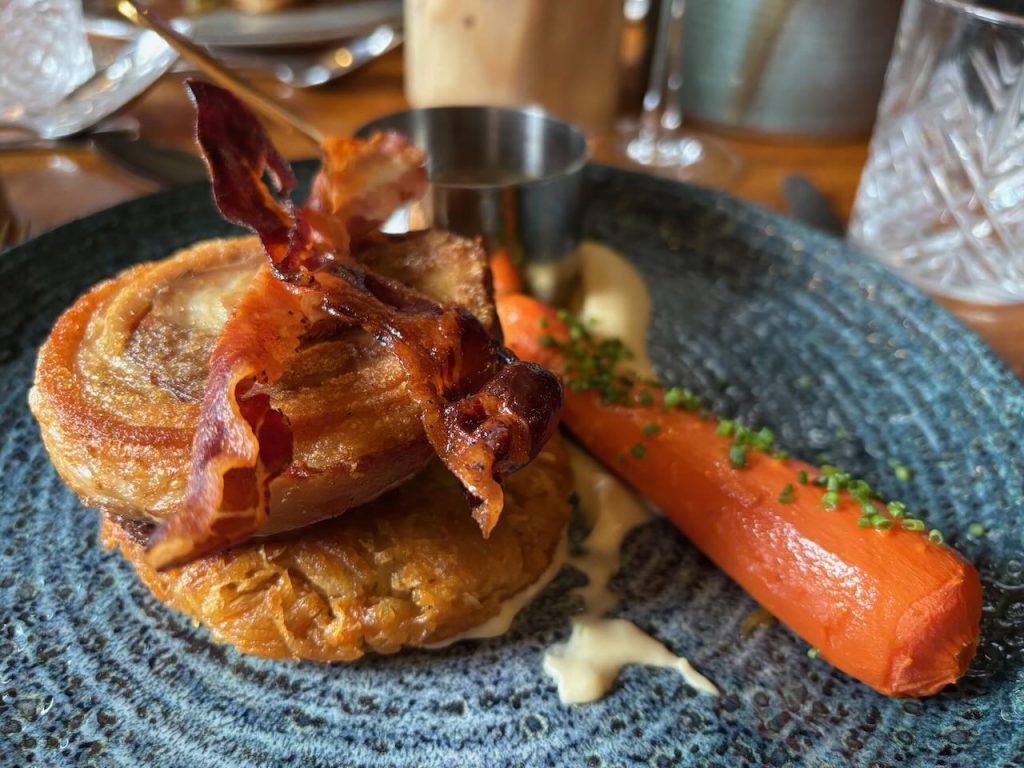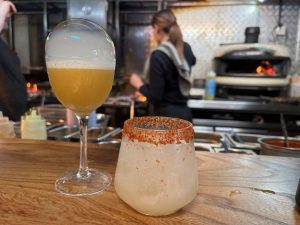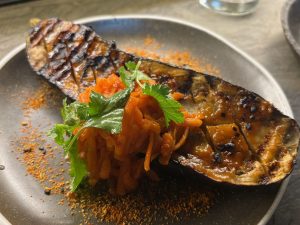
Furna
I wonder to what degree my enthusiasm for a menu is guided by the whole experience? There’s absolutely no doubt it has an effect: I don’t have professional tastebuds nor zen-like detachment, so how much I enjoyed the fish dish will be influenced by how much I’m enjoying the whole dining experience. But is the effect extreme enough to disqualify the entire review? If I rave about menu A but I’m decidedly “meh” about menu B, would you really be well advised to pick restaurant A over restaurant B? I hope so. Because after all, we’re all hoping for a good experience and although some luck comes into it, generally the best service and ambiance are as consistent as the best cooking.
Anyway, we had a great meal at the chef’s counter at Furna, and I’d recommend booking those seats if you can. Admittedly it was a quiet lunchtime, so we got to monopolise chef and the team with all our questions about the food and the wine and pretty much anything else. The rest of the dining room is dark tones, stylish and inviting. Short but solid wine list and some great cocktails to start.
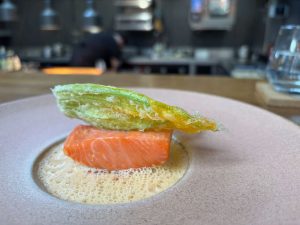
Trout
First up were some jolly splendid snacks, including a scrumptious hash brown fried in pork fat with a curl of smoky coppa on top, and a chunk of braised octopus with the most perfect texture and a punchy, sticky XO glaze with a yeasty foamy hollandaise. Both of these were among those happy “line up a dozen of these, I’ll be in heaven” snacks. The little tearable brioche/milkbread loaf glazed in garlicky butter just got demolished by us, served with creamy cod roe as well as butter.
First starter was a single Jersey royal, skin blackened, on top of a cream sauce spiked with smoked eel and apple. The potato was topped with a generous dollop of pike roe, a beautiful golden roe with a slightly more delicate flavour than caviar and a more sturdy bite. Loved it. Fish was chalk stream trout, a rather salty piece of fish but with a real depth of flavour from the curing. The star of the dish was a beautiful sea buckthorn and habanero sauce, a new combo to me but the fragrant citrus and the fruity heat paired very well. The sauce and the crunchy tempura courgette flower on top went a good way to balancing the salty fish.
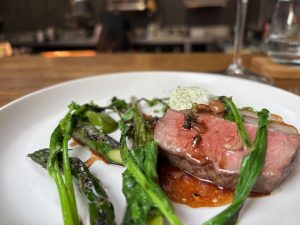
Lush lamb
Main course was my favourite lamb dish from the last few we’ve had (dine out on tasting menus in spring and you basically get to find out how many ways there are of doing lamb!). The lamb was beautifully full-flavoured with extra oomph from its finish under flames, but the extras really made it: a cloudy dollop of whipped curds, a courgette-and-basil puree that absolutely hummed with basic fragrance, some tiny bone marrow cubes and well-charred asparagus and other greens. Oh, and a lollipop of crispy fried lamb sweetbread on the side, dipped in a lush cumin-y sauce. Yum.
We finished with a nice slice of lemon tart on a buckwheat pastry, given zest and pop by charred pieces of various citrus fruits (we even nibbled on Buddha’s finger!). Good petit fours too; I’ll take an Aperol spritz jelly over any number of fruit jellies in future, thank you!
We paid £85 for the menu and £55 for an enjoyable wine pairing, although this was lunch time and I think there’s an extra tenner to pay in the evenings. I thought this was great value for the quality of the menu and the overall experience. I’ll definitely suggest Furna if anyone asks for a good fine dining option in the middle of Brighton!
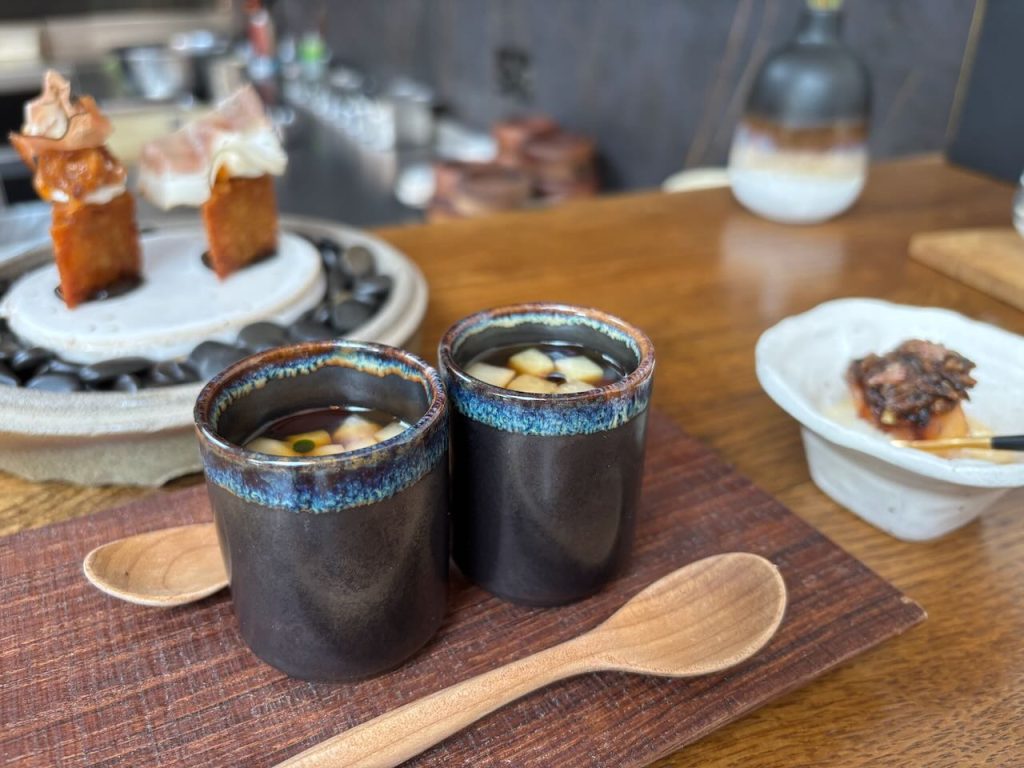
Great snacks



